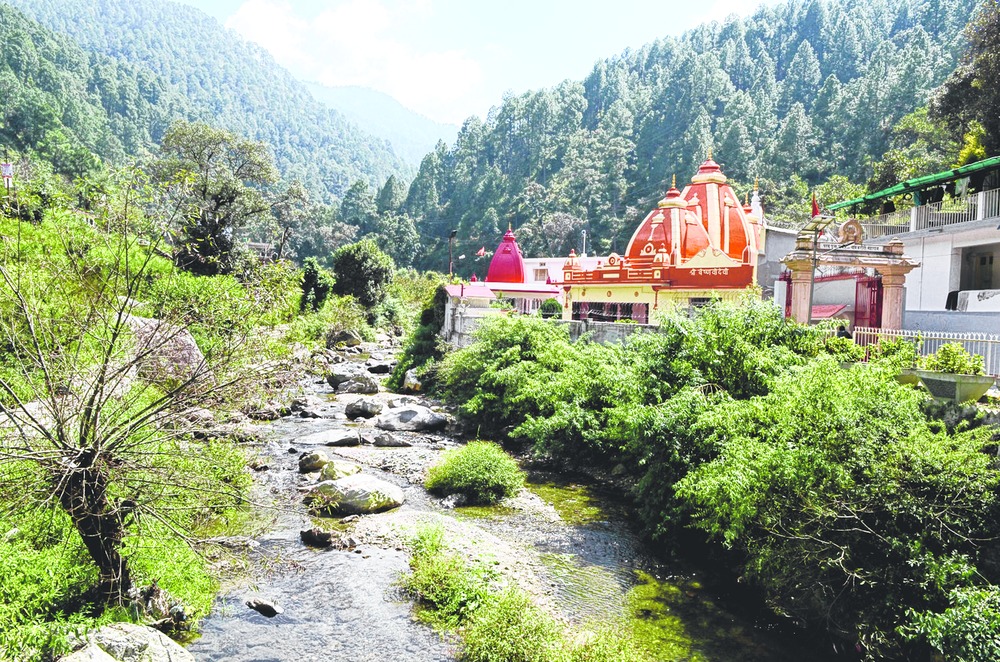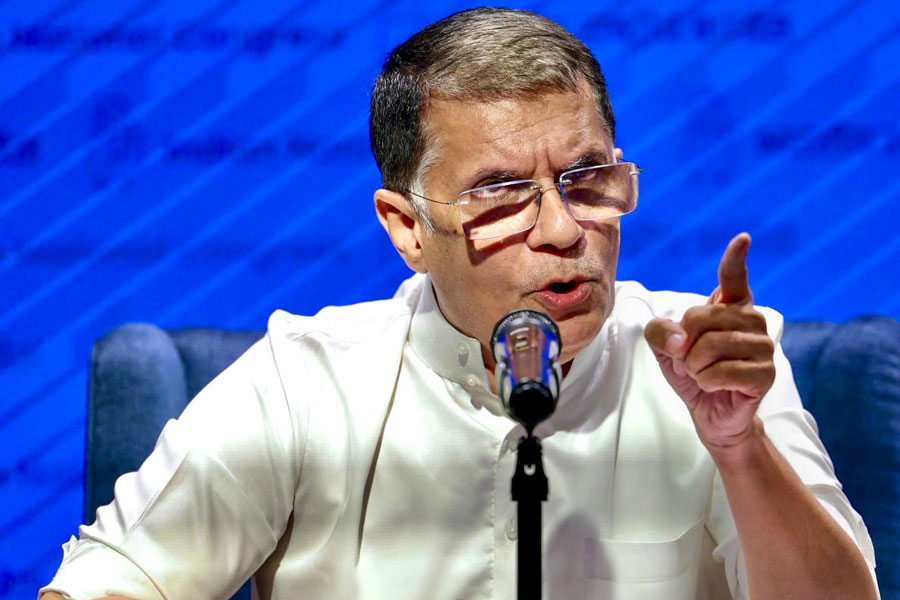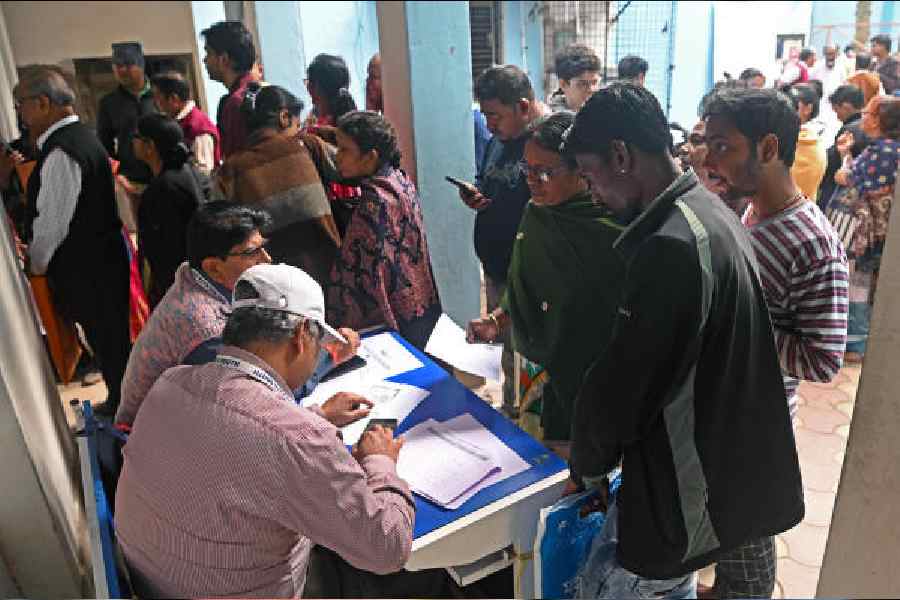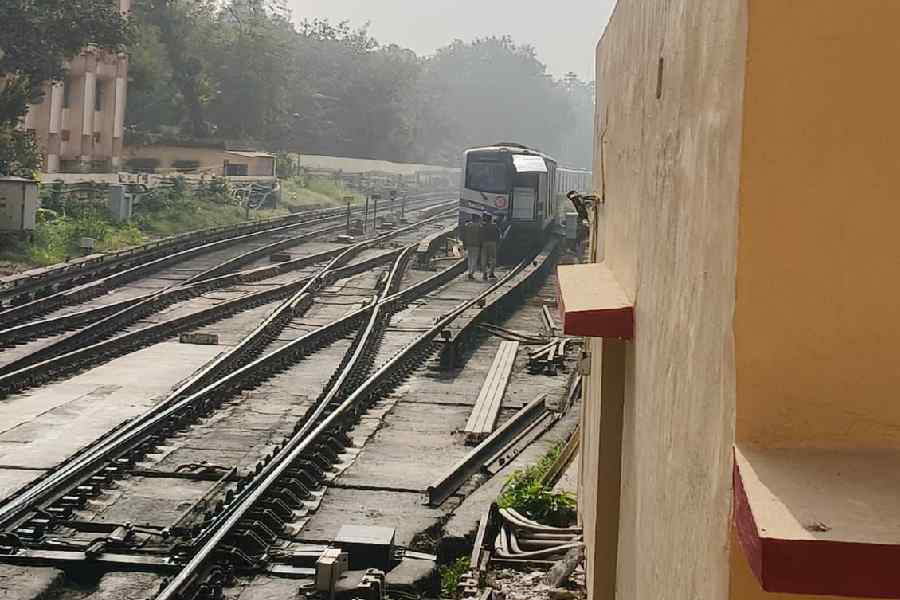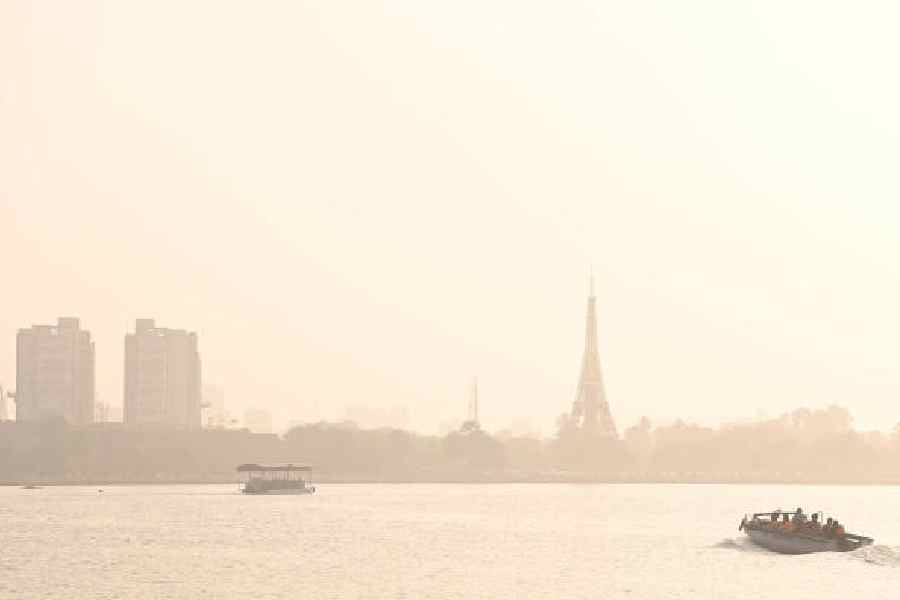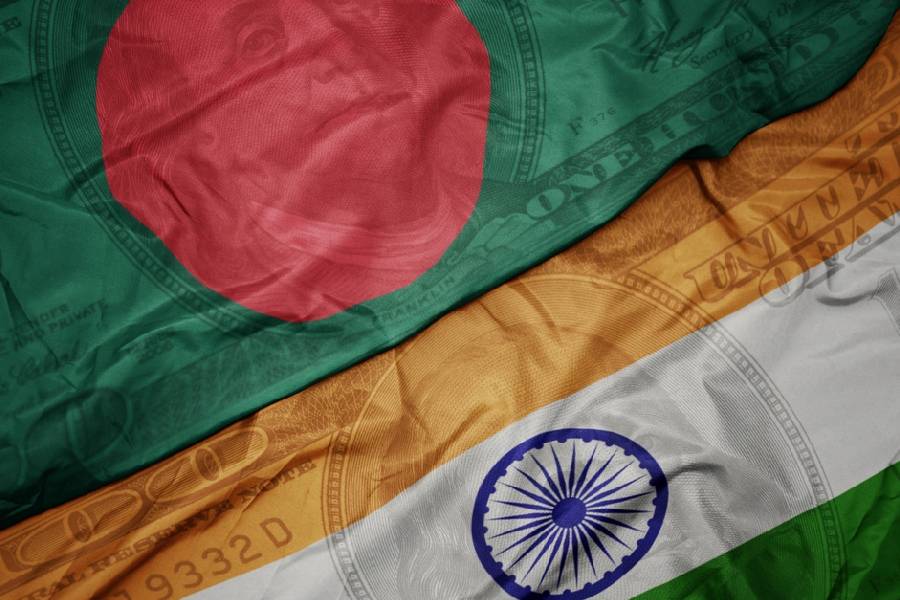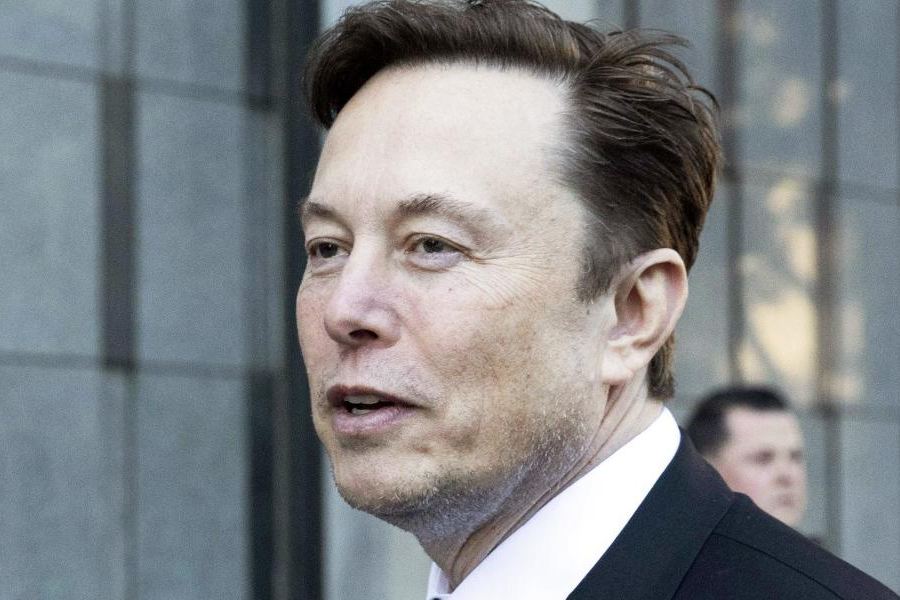

which Steve Jobs used to stay, according to the landlord. The ground floor then was a cattle shed and Jobs lived upstairs when he was not staying at the ashram, the landlord said
Kainchi Dham (Uttarakhand), Sept. 29: The waters of the rivulet named Shipra tinkle northwards here before merging into the Kosi. This is the valley that birthed Silicon Valley nirvana for Steve Jobs and, more than 30 years later, for Facebook's Mark Zuckerberg.
That variety of nirvana was born of a narcotic mist for one and a digital desperation for the other.
In the "town hall" with Prime Minister Narendra Modi at the Facebook headquarters on Sunday, Zuckerberg narrated how Jobs had advised him - "before things were really going well" for Facebook and when "we had hit a tough patch" - to reflect in "this temple in India" that the Apple co-founder had gone to early on when his thinking and vision were evolving.
Zuckerberg did not name the temple but Jobs had gained a higher level of realisation in 1973-1974 in this ashram of Neem Karoli Baba.
Today, inside the ashram that overlooks the river, the manager of Kainchi (scissor-bend) dham (holy spot), Vinod Chandra Joshi, is tickled pink.
" Arre, Modiji ne yeh kya karwa diya (What has Modi done)," he feigns concern with raised eyebrows, but his lips stretch to his ears in a grin.
"We in the ashram are pilgrims and devotees, not tourists; we shun the limelight," he says but walks into it any way.
Juggling a laptop and a tablet computer, searching through mail from devotees, he steadily reconstructs a narrative of the Jobs and Zuckerberg visits.
In the 30 years between their pilgrimages, India has moved from the mistiness of the hippie times to a digital vision of itself that Modi has, during his US trip, been claiming to have shaped.
Joshi says the ashram's layout today is the same as at the time of Neem Karoli Baba, who died in 1973. He, Joshi, manager for more than three decades, has ensured its upkeep.
The cluster of temples and sparse quarters are spotlessly clean. In the first temple, a group of sadhus chant "Hare Rama, Hare Krishna" to the beat of a khol, a drum that is sat across the lap and is wide at one end and narrow at the other.
Two of the temple spires are gleaming red. A ban on photography inside the ashram is strictly enforced. This is because, Joshi says, the Baba believed in working his magic and miracles on the quiet.
Years later, there are different accounts of the miracles by the Baba, said to possess knowledge of the past, present and future.
His devotees to this day assert that the depth of his magic was unfathomable. When a British ticket examiner threw him out of a first-class coach in colonial times, the train refused to move, goes the story, till the official apologised and re-accommodated the Baba.
Years later, the International Society of Krishna Consciousness pulled out an account of a Swedish devotee who was then in her teens. She had written that the Baba had gone after her like a 17-year-old but she, after initial rejection, felt she was suckling a child.
The fog and mist of the dum-maaro-dum phase is like the weather in these parts for much of the year. They lift but they also settle.
In one lift, you see another devotee, now known as Ram Dass - a Dr Richard Alpert who was a researcher on the effects of the drug LSD. In another report, the Baba was capable of consuming large quantities of the drug himself without suffering side effects.
"Who knew Steve Jobs then?" asks Joshi. But today, on the national highway to Almora from where the ashram is a skip down, Girish Chandra Tiwari, who sells the sweet-and-sour jaljeera drink and freshly fried pakoras, greets one with enthusiasm.
"Steve Jobs hamaare ghar mein thehre the (Steve Jobs stayed in our house)," he says.
It was a mud-and-stone structure then with a cattle shed on the ground floor. Tiwari was a five-year-old in 1973. He has prospered. The stone-and-mud structure has been pulled down: in its place stands a two-storey building that gleams pink in the sun-washed valley.
Joshi pulls out an email from Dr Larry Brilliant, an epidemiologist who was associated with Google's philanthropic arm google.org and was one of the Baba's most prominent devotees.
Neem Karoli Baba died on October 10, 1973. (His devotees say he left his body on that day.) A few months earlier, Brilliant had suggested the visit to Jobs, who had taken a job as a music store attendant after dropping out of school.
It is possible, says Joshi, that Jobs was inspired to make the trip after reading a book or meeting its author, Alpert.
"Brilliant says that Steve Jobs spent six months in India," Joshi says as he reads the mail. He refuses to forward it.
"He says that his head was shaven and he walked barefoot and only when he visited him (Brilliant) at the World Health Organisation office in Delhi would he be forced to wear shoes."

‘We weren’t going to find a place
where we could go for a month
to be enlightened. It was one of
the first times that I started to
realize that maybe Thomas Edison
did a lot more to improve the world
than Karl Marx and (guru) Neem
Karoli Baba put together’
— From Steve Jobs:
The Brilliant Mind Behind Apple
by Anthony Imbimbo
Jobs spent part of his time here inside a hut at the ashram known as the "White House" and part of the time as a tenant of the Tiwaris.
Before that, the Baba had asked Brilliant to associate himself with a programme to eradicate small pox from India. Brilliant is said to have accomplished much for the programme.
In an August 2012 interview to Avi Solomon of boingboing.net, Daniel Kottke, who accompanied Jobs to India, said: "That trip came about because Steve and I both got copies of Be Here Now at the same time. Be Here Now was a breakthrough book, kind of like the psychedelic culture of America goes to India looking for holy men.
"That's what Be Here Now represented. They rushed it into print; it came out quite early in 1972. It was a brand new story, and I had never seen anything like that and it just completely blew me away."
Alpert, the one-time researcher on LSD-tripping, was the author of Be Here Now.
Kottke recalled the book's account of Bhagwan Das, a "stoner hippie" from California "and he was a little bit gay, he was wearing his pastel-coloured saris and changing his clothes four times a day".
The visit by Jobs and Kottke was "...funny. It was slightly disappointing in the sense we didn't have a Neem Karoli Baba experience."
The Baba had died about three months before they arrived at the ashram. In the account of the stoner hippie, the man from California "was smoking lots of ganja and he had long dreadlocks, but he had hooked up with Neem Karoli somehow".
Zuckerberg's visit was somewhat different, says Joshi. Since the ashram accepts devotees only on personal recommendations, Brilliant had written to Joshi saying he was sending a certain "Mark". Joshi says it was about four or five years before Jobs's death in 2011.
"I cannot give you the exact time because we do not maintain a visitors' register - this is an ashram, not a hotel," he says.
Apparently, Zuckerberg flew to Pantnagar, an industrial town adjacent to Rudrapur in the plains, and drove up from there. He was scheduled to leave the next day but was told that the little aircraft he was to fly would have to wait out a storm.
"So he ended up spending two nights here instead of one," says Joshi.
Joshi, with a tilak on his forehead and thick black hair and a thick black moustache that belie his 65 years, admits that the two visits, taken together, might begin to sound like a "formula" for success for those in business.
In the years after their visits to the ashram of Neem Karoli Baba, Jobs and Zuckerberg turned around their fortunes.
The suggestion of the "formula" does not displease Joshi in the slightest. The prospect that such a formula may drive many more to turn their fortunes around after a visit to his ashram can throw up another godman.
There are other godmen in these parts, says Tiwari. "And in so many places. A few miles up there is Hairakhan Baba, and then there is Somvargiri Baba who doesn't have an ashram because he is never in one place, and then there was Sai Baba and Deoraha Baba - there is a Baba for everyone and everything. These hills have lots of them."
Ramdev somehow escapes his list.
What made Neem Karoli Baba special, he says, was his refusal to distinguish between his followers.
Joshi, the manager, says: "Premavtar (Love Incarnate, another name for Neem Karoli Baba) would even say that Hanuman and Christ are the same."
The Baba was revered also as an incarnation of Hanuman, of whom he was a devotee.
Joshi first met the Baba as a child. He had come for a cousin's wedding. The wedding was difficult to arrange but, Joshi says, it was fixed by the Baba.
"He just came and sat there and did nothing but I felt that his grace had touched me."
The ashram can accommodate up to 60 devotees at a time. But in June, when it celebrates its establishment in 1962 and Tiwari hires a hundred hands to make a favourite sweet - malpua - it takes in more than that.
The numbers of those that turn up here and return inspired, blessed and fortunate are lost in the mist that has begun to roll down.

